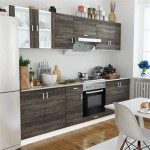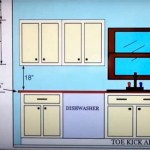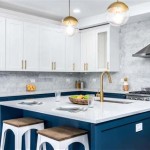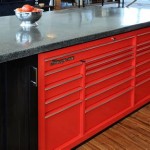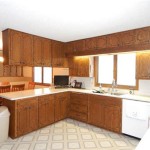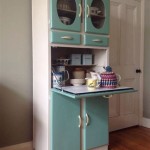Adding Trim to Kitchen Cupboards: Essential Aspects to Consider
Adding trim to kitchen cupboards is an effective way to enhance their aesthetic appeal and functionality. By incorporating trim, you can add character, definition, and storage space to your kitchen. This article will explore the essential aspects to consider when adding trim to kitchen cupboards, ensuring a successful and transformative project. ### Material Selection The choice of trim material is crucial for both durability and aesthetic harmony. Popular options include wood, MDF, and PVC. Wood provides a classic and timeless look, while MDF offers versatility and affordability. PVC is a moisture-resistant option, making it suitable for kitchens prone to spills and humidity. Determine the style of your kitchen and the desired lifespan of the trim to make an informed decision. ### Trim Style and Design The style and design of the trim will significantly impact the overall look of your kitchen. Traditional crown molding adds an elegant touch, while baseboard molding provides a finished look at the bottom of the cabinets. Beadboard molding creates a cottage-style aesthetic, and picture rail molding can display artwork or accessories. Consider the existing cabinet style, the kitchen's architectural features, and your personal preferences when selecting the trim design. ### Functional Considerations In addition to aesthetics, trim can also serve functional purposes. Crown molding can hide the gap between cabinets and the ceiling, reducing dust accumulation. Baseboard molding can protect the bottom of the cabinets from kicks and spills. Picture rail molding provides a convenient way to display artwork without damaging walls. Determine the specific needs of your kitchen and select trim that meets both aesthetic and practical requirements. ### Installation Techniques The method of installing trim depends on the material used and the desired results. Crown molding, for example, is typically installed using a miter saw to create angled cuts that fit seamlessly together. Baseboard molding can be attached directly to the cabinet base using nails or screws. Beadboard molding may require a backing board for added support. Ensure you have the necessary tools, safety gear, and knowledge before attempting trim installation. ### Painting and Finishing Painting or staining the trim can further enhance the aesthetic appeal and protect it from wear and tear. Choose a paint color that complements the kitchen's existing color scheme or opt for a contrasting shade to create a bolder statement. Use a high-quality paint brush or sprayer to achieve a smooth and even finish. Consider applying a protective sealant to extend the durability of the trim and make cleaning easier. ### Conclusion Adding trim to kitchen cupboards can transform the look and functionality of your kitchen. By considering the essential aspects outlined in this article, you can make informed decisions regarding material selection, style, functionality, installation techniques, and finishing options. With careful planning and execution, you can enhance the beauty, practicality, and value of your kitchen, creating a space you'll love for years to come.
From Drab To Fab Adding Trim Cabinets

From Drab To Fab Adding Trim Cabinets

How To Add Trim And Paint Your Laminate Cabinets

Adding Moldings To Your Kitchen Cabinets Remodelando La Casa

Easy And Inexpensive Cabinet Updates Adding Trim To Cabinets Drawers The Rozy Home

Adding Shaker Trim To Flat Panel Cabinets Hometalk

How To Add Trim And Paint Your Laminate Cabinets

Adding Molding To Old Cabinets Diy Tutorial Cabinet Doors Kitchen

Add Moulding To Flat Cabinet Doors Home Kitchens Cabinets Diy Kitchen

Diy Kitchen Cabinet Upgrade With Paint And Crown Molding

